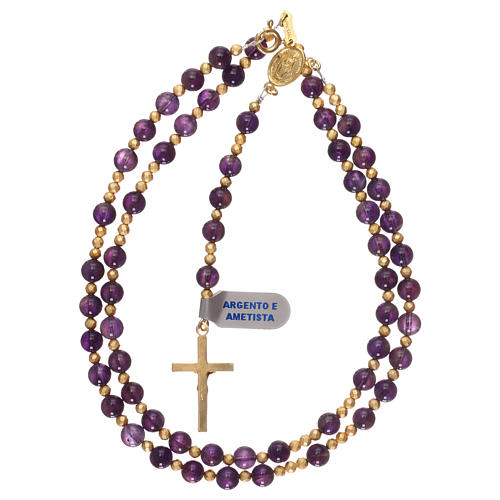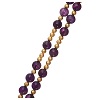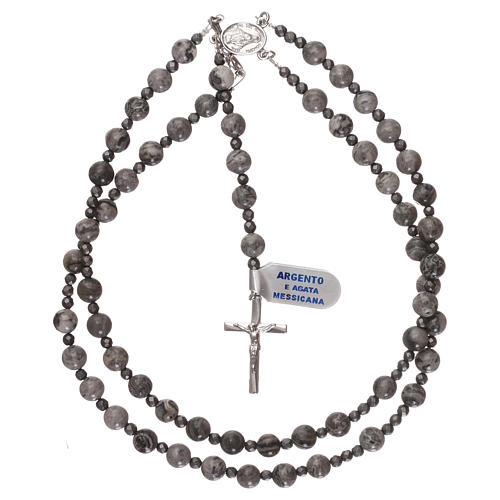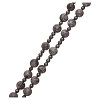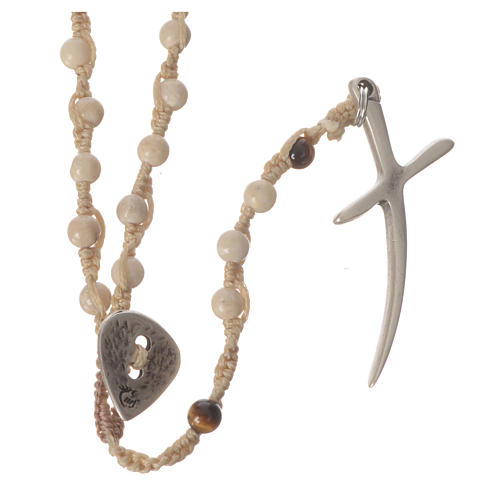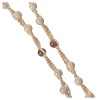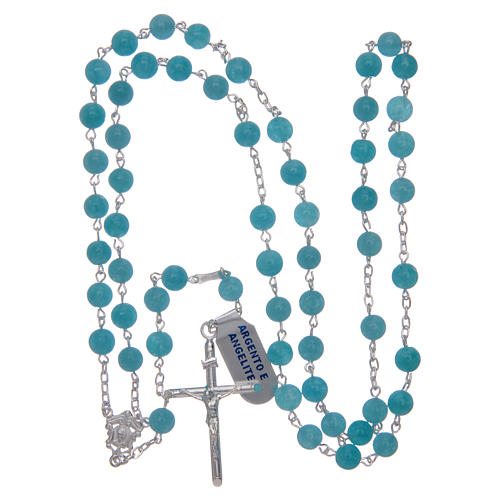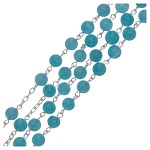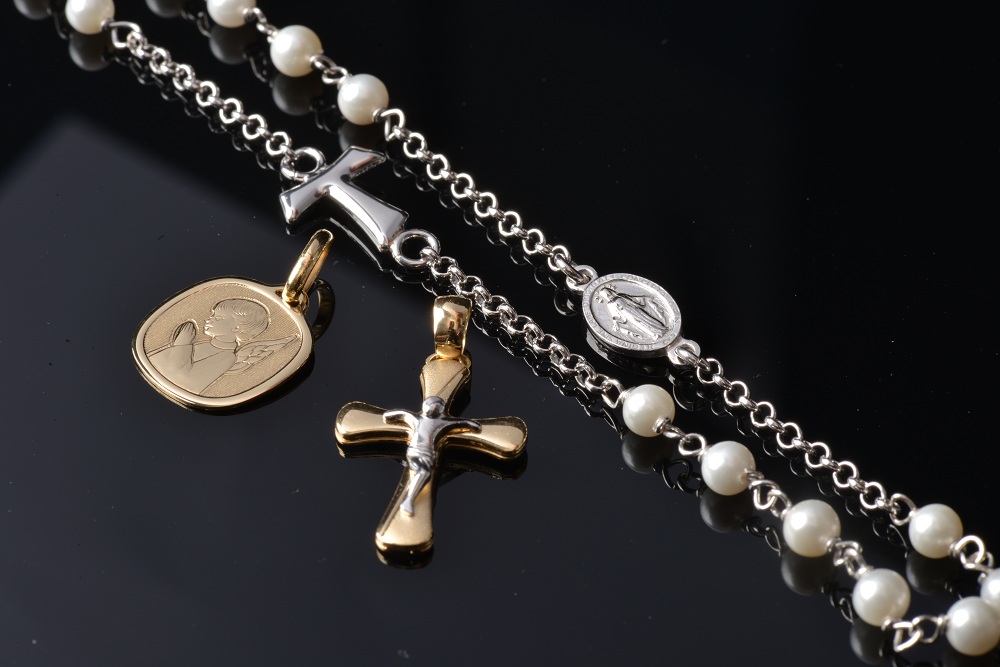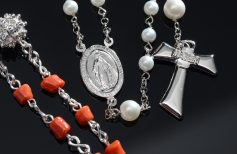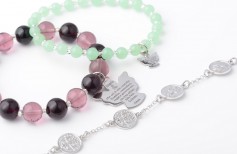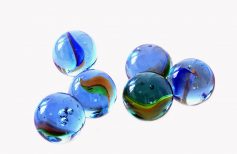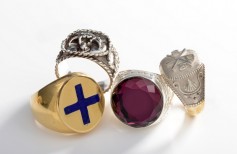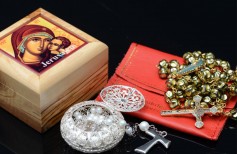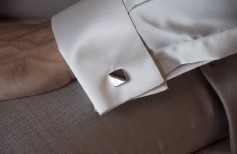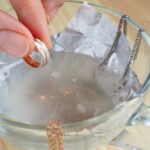Semi-precious stones have always been used to imitate semi-precious stones. Let’s discover together the suggestion of semi-precious stone rosaries, sacred jewels of great beauty and value.
Hardstone rosaries have always been a less expensive, but no less beautiful, alternative to precious stone rosaries. In our online catalogue, you will find a wide selection of rosaries in precious stones, but also rosaries in semiprecious stones, such as malachite, tiger’s eye, aventurine, hematite, amethyst, rose quartz, lapis lazuli. They could be a great gift idea for the approaching October. In fact, as we have already mentioned in a previous article, October is the month of the rosary.
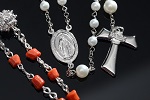
October: the month of the Holy Rosary
What is the connection between the fall month with what is probably the most important and popular devotional form in the world?
Where does this tradition come from? October is called the Month of the Rosary because the Blessed Virgin Mary of the Rosary is celebrated on 7 October. The choice of this particular date for the devotion to the Blessed Virgin Mary of the Rosary is to be found in various historical events, including the apparition of the Madonna to San Domenico, founder of the Dominican order, which took place in that month in 1208 in Prouille. The choice of day 7 would instead be attributed to the battle of Lepanto. On 7 October 1571 the fleets of the Ottoman Empire and that of the Holy League, which brought together the forces of the Republic of Venice, Spain, the Papal State, Genoa, the Knights of Malta, the Duchy of Savoy, the Grand Duchy of Tuscany, of the Duchy of Urbino, of the Republic of Lucca, of the Duchy of Ferrara and the Duchy of Mantua, faced each other. With the overwhelming victory of the Holy League, the Muslim empire in Europe began its decline. Legend has it that Pope Pius V on the eve of the battle had blessed the banner of the League which depicted the Crucifix flanked by the apostles Peter and Paul on a red background. Above it, Constantine’s motto In hoc signo vinces headed. When the battle was over, the Pontiff had a vision in which the announcement was made that the League had won. Subsequently, after the Pope decided to consecrate that particular occasion to the Blessed Virgin of the Rosary, the belief also spread that, before the battle, all the soldiers of the League had invoked Mary’s protection upon themselves by reciting the Rosary.
Regardless of the beliefs relating to October, the Rosary remains one of the devotional objects par excellence. Its practice is linked to the precept of Jesus, who invited us to pray, to pray always, without getting tired. We believe it is interesting to dwell not only on the spiritual value of the Rosary but also on the exquisitely material one. We are not only talking about the fact that it can be composed of more or less precious materials, just like the semi-precious stones we will talk about in this article, but also about how these particular necklaces are worked, and why a stone can be rarer than another.
We have dedicated an interesting article to how to make a DIY rosary in a few simple steps. An original idea to create your rosary yourself, or to make a unique and special one give to someone we care about. In our store, you will find a convenient complete kit to make your Rosary, with everything you need, from the cord to the closing hooks, to the metallic finishes, to the cross, as well as different ornaments to create your favourite variant.

DIY Rosaries in few easy steps
Reciting the Rosary has always been seen as a way to fulfill one’s duty as a Christian …
Returning to how a Rosary is made, we remember that the Rosary crown is made up of fifty-three small beads that symbolise the prayers of the Hail Mary, six larger beads (or of a different colour) that symbolise the Our Father and Gloria, and a Crucifix. The grains are held together by a cord of various materials, usually nylon.
The cord must be about one metre long, and a point 15 cm from the end will be identified on it with a ruler. Here you will have to tie a knot and start composing the crown, threading the beads. The first ten beads will make up the first ten, then they will be stopped with another knot, after which a large grain that symbolises the Our Father will be inserted. So four times, until five tens are completed. After having inserted the last grain of the Our Father, the Rosary is closed with a knot. At this point, you only need to compose the hanging part, with the addition of a possible cross, the medal that divides the two parts of the Rosary, a large grain for the Our Father, three beads for the three Hail Marys, a last grain for the Our Father. The cross will complete our Rosary.
Hardstones
How to choose the semi-precious stones that will make up our Rosary? It has always been believed that stones have particular, energetic properties. The choice of the hard stone to create a Rosary is mainly linked to the processing methods and the aesthetic taste, but some of those suggestions have come down to us. Let’s see some features related to the various stones that make up the rosary necklaces that you find in our shop.
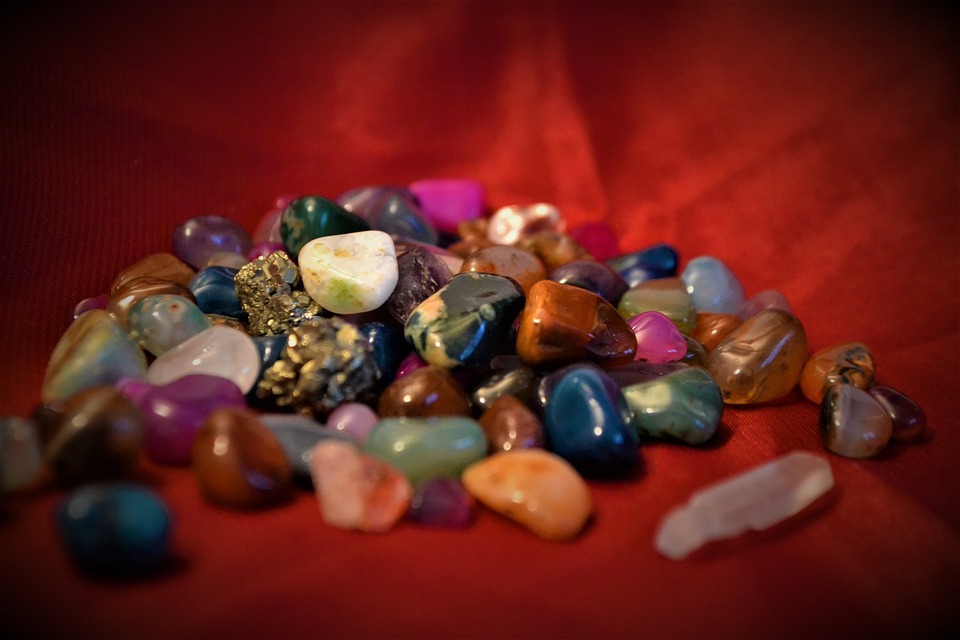
Amethyst
Amethyst is a type of macrocrystalline quartz, which owes its particular purple colour to the iron present inside. It is a very appreciated and used stone since ancient times, for its beauty and its wonderful light.
Amethysts come mainly from Brazil, Uruguay, and Africa, and it is possible to trace the origin of a stone precisely from the intensity of its colour, as well as from its size. It must be said that the more uniform and intense the colour of the amethyst, the more the value of the stone increases. Amethyst is also particularly popular because it lends itself to particular shapes and cuts. Its name derives from the Greek ‘amethystos‘, “he who does not get drunk”. In fact, in ancient times it was believed that this stone made people immune to getting drunk! Perhaps this is why, according to crystal therapy, amethyst can purify the blood and fight headaches. Not only that, but it would help concentration and rest. It also favours meditation and prayer. The Greeks said that Amethyst was originally a nymph threatened by Dionysus, the god of wine. The goddess Artemis, to protect her, transformed her into a beautiful stone. Dionisio, seized by anger, threw a cup of wine on the precious crystal, which has since taken on the purplish colour that everyone appreciates. And, perhaps, also its power to counteract the effects of wine!
Amethyst lends itself both to the making of jewels and to that of small objects. If processed at high temperatures it can turn into citrine quartz.
Hematite
Hematite is a mineral, in this case, an oxide. Its name derives from the Greek word ‘haimatites‘, “similar to blood”. For this reason, it is commonly called ‘blood stone‘, also for the colour that the water used for its processing takes on. It is also called the ‘iron rose‘ because it sometimes crystallises into the shape of a metallic flower. Like the amethyst, it comes in particular from Brazil, but also the Alps and the Island of Elba. The word ‘pencil’ would derive from hematite because this stone was originally used to make pencils. In ancient times, it was believed that it could banish diseases from the body. According to crystal therapy, it has the power to absorb nervousness and excess energy. Helps to find balance and courage.
Pumice
Pumice, or volcanic stone, is formed by the sudden cooling of the magma that came into contact with the air and solidified. Hence its black colour. It is also used for massages because it can absorb heat and then release it gradually. Pumice also absorbs excess energy and helps with emotional balance. Used in the past mainly for road paving, today it is also widely used in the jewellery industry. Its porous consistency makes it easily workable. Pumice jewels have an irregular surface, are very pleasant to the touch, and are crossed by small holes produced by the gas during the solidification of the magma. They can have a matte or glossy finish.
Fossil stone
Fossil stones can also be used to create magnificent jewellery. These stones have formed over the millennia thanks to the stratification of plant and animal remains. This is why their colouring can vary a lot.
Angelite
Angelite is a mineral formed mostly of anhydrous calcium sulfate. Its real name would be anhydrite, but it is called Angelite when it is blue. Its colour ranges from pale to bright blue. In nature, it is found in clusters. Its name comes from the Greek ‘anhydras‘, “without water”. It is extracted mainly in Italy, in the canton of Vaud (Switzerland), in Austria, Poland, but also in India, New Jersey, Texas, Louisiana.
Agate
Agate is a silicon oxide, a variety of chalcedony, or quartz, formed by triangular crystals. Semi-transparent, it is usually white or grey or blue, but yellow, green, red, even black or streaked agates are also found. It is extracted from volcanic quarries mainly in Brazil, India, Asia Minor, China. It takes its name from the Greek ‘achátes‘, perhaps because the first stones of this kind were collected in the bed of the Agato river in Sicily. Considered a stone linked to the spiritual sphere, in ancient times it was considered magical.
Coral
Coral is not a hard stone, but the limestone skeleton of tiny marine organisms, which gather in colonies and create this very hard barrier to protect themselves. Coral is formed mainly in warm, clear and calm waters, both in tropical areas and in the Mediterranean. Indeed, the most prized coral is produced in the Mediterranean, the red one, while corals from other sources are usually white, green, brown. Each piece of coral is unique, due to its organic origin, and therefore very precious. Once harvested, the coral is cleaned, sanded and then cut, although it is often chosen to keep its natural ramifications as an ornament. Legend has it that the coral was born from the blood that came out of the neck of Medusa, the Gorgon, beheaded by Perseus. In ancient times it was considered an excellent remedy for anaemia and today it is used to combat anxiety.
In our store, you will also find rosaries in carnelian, a chalcedony that owes its red colour to the iron it contains, a symbol of life for the Egyptians; green aventurine, quartz containing various minerals in random proportion, which also gave its name to a particular Murano glass; lapis lazuli, silicate of sulfur, sodium and aluminium with intense blue colour, already widely used by the ancient Egyptians; turquoise, copper and aluminium phosphate with a characteristic blue colour, used by shamans and Egyptians to communicate with spirits; tiger’s eye, silicon oxide from the quartz family, with yellow-gold reflections on a dark background, stone of balance and masculine energy; jade, sodium and aluminium silicate with a splendid emerald green colour; onyx, a type of opaque grey to black chalcedony quartz, used since prehistoric times as an ornament.


